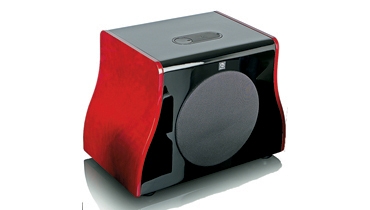Boston Acoustics VS Series home theater speaker system Page 2

MUSIC & MOVIE PERFORMANCE
Listened to alone in stereo, the VS240s revealed excellent transparency and an exceedingly neutral and accurate tonal balance. While tilting almost imperceptibly to the warmer side of the ledger, as opposed to the more "analytical" side, they were virtually free of the discrete midrange or treble colorations that would give a lesser speaker a distinct character. Their 4½-inch woofers didn't yield much deep bass, but they went low enough to deliver musically lucid balance on most pop and nearly all classical or jazz material. That means they should easily reach down to a sensible subwoofer crossover, typically 80 to 100 Hz.
When I retried 2-channel with the VPS-210 subwoofer dialed in (I settled on a 90-Hz crossover, which worked best in my room), the system demonstrated a very high degree of musical competence. Tracks such as Natalie Merchant's "San Andreas Fault" (remastered, from Retrospective 1995-2005) produced dramatically believable in-room sound on the opening trio of voice, digital electric piano (here audibly not a real Fender Rhodes), and drums.
A Telarc SACD of Benjamin Zander conducting the Philharmonia Orchestra in Mahler's Symphony No. 1 unearthed subtleties in the VS240 that I might not have heard while auditioning lesser productions. The Boston suite transparently conveyed the complex textures of Mahler's music and Zander's sculpted interpretive contours, including the full range of stringed-instrument tonalities on display. For instance, Mahler's characteristic extreme-register violins were free to wail without shrieking, which isn't the case from every speaker. The quartet of VS240s proved ideal for this expertly natural Telarc production. Orchestral timbre sounded seamless from front to back, and I was never startled by a displaced, behind-the-ear note or attack.
Movies obviously make a radically different set of demands on a speaker system than music does. Wall•E on Blu-ray Disc has a first-class DTS-HD Master Audio soundtrack. The film depends largely upon sound effects, and the Boston layout delivered them at first-run-cinema levels without a stumble. This intensely surround-dependent movie never drew my attention off the screen with a "pop out" from the direct-radiator rear speakers, and the front-trio soundstage was seamless and even. Lateral pans were impressively smooth, and I heard ample dynamic punch without any tendency toward crispiness on big, treble-rich transients.
The VS224 center produced a satisfying tonal match to the front VS240s for listeners on or near the center line. Off-axis, I heard some mild lobing from its dual low-frequency drivers, manifested as a subtle loss of weight and body most noticeable on deeper male voices. But it was less drastic than from many other center speakers I've auditioned, and I wouldn't expect much impact with a typical three-across home-seating layout.
The VPS210 subwoofer also comported itself very well. It uses a single 10-inch active driver and 10-inch passive- radiator cone, along with a Class D amp said to produce 500 watts, to achieve impressive deep-bass extension. It delivered substantial visceral impact with Wall•E's numberless rumbles and thumps, closely approaching the performance of my long-term sub, a sealed model with a single 12-inch driver that costs about $400 more. That said, while bass level and density was satisfying overall, the Boston sub fell just short on the most taxing content, such as the cruise-ship landing in Chapter 30. With a master volume 10 dB below reference level, which is several dB louder than anyone with typical-sensitivity speakers will likely desire in a home setting, the VPS210 produced a just-noticeably less tangible lowest octave, and on the sequence's two largest peaks, the limiting kicked in audibly with a soft, almost entirely masked "thup!"
Still, this is pretty heady territory for a sub with a single 10-inch active driver, of which the VPS210 proved to be an unusually capable example. Overall, I encountered no level problems with Boston's new system. Even during stereo-plus-subwoofer music listening with my 150-watt-per-channel amp, the VS240s played as loudly as I could wish, with no audible signs of strain and little evidence of dynamic compression. That's pretty impressive performance for a 4-inch two-way.
BOTTOM LINE
There are, in all honesty, a zillion good, compact surround speaker systems you can mate up with a serious subwoofer for around 4 grand. Make that a zillion and one: The Boston VS system ranks high even in this highly competitive class, combining unusual musical accuracy with enough dynamics and bass chops for full-on cinematic sound.












































